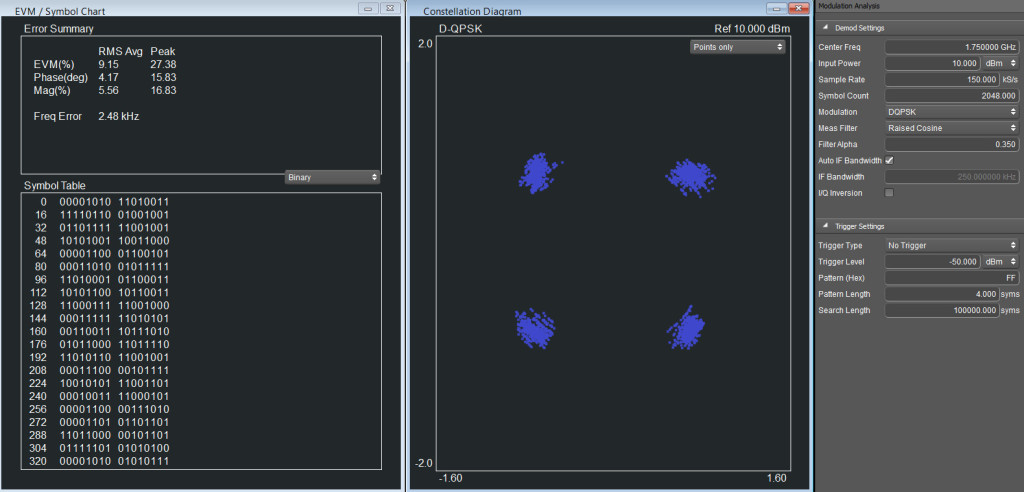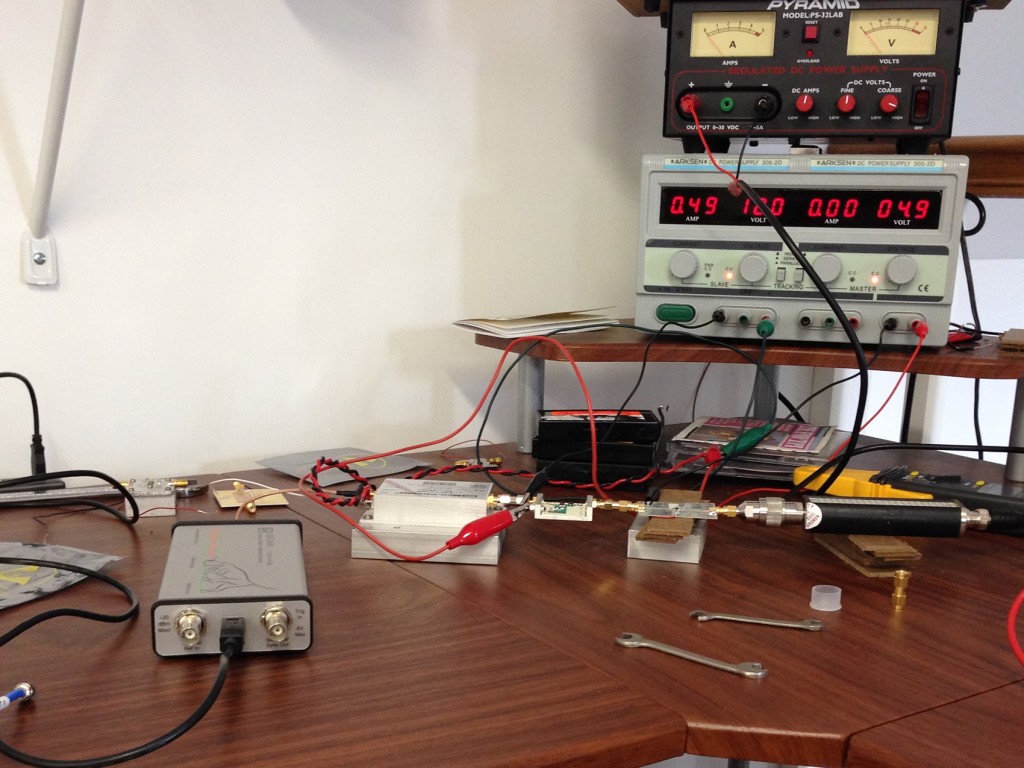Recently, we contacted Phil Basile, president of HiQue RF Technology LLC. Phil is an avid participant in our Facebook group and has a long history of high-end RF hardware development for mission-critical applications. Knowing that Phil uses our gear in his RF research and development processes, we were interested to hear how he uses our devices and his opinion of Signal Hound products.
Why did you need a spectrum analyzer or signal generator in the first place?
I have been building RF transmitters and receivers for over 47 years. I build commercial as well as military hardware, with military comprising over 95% of my business. It is imperative that I have signal generators, VNA and scalar analyzers that I can rely on and that provide the info I need to evaluate my designs. My designs are on the retired space shuttle, the space station, the Trident submarine, the F16 and many additional projects. I have had front stage in test equipment development over all these years. My measurements include noise figure, gain saturation, power amplifiers as well as modulators and demodulators. The VSG25 coupled to the SA44B will provide easy painless measurements of all of these parameters.
What shortcomings did other competitive products have? How did they fall short?
The major factor for a small consulting firm such as my own is cost. I cannot afford to buy a $100,000 piece of equipment to perform tasks on my contracts. The Signal [Hound] line of equipment has bridged this gap by providing high accuracy, fantastic measurement capability at an affordable price. My contractors are under the impression that I have a major investment in capital equipment inventory.
What was the key pain point for you, prior to discovering Signal Hound?
Cost. At times I have been forced to build my own test equipment to overcome the cost factors.
Briefly, why did you choose Signal Hound?
High accuracy, multiple testing capability, and cost.
What technology issues needed to be addressed? What were they?
In my business, gain, noise figure phase noise modulation performance are key issues.

Constellation dqpsk photo shows the modulation of a Class E amplifier at 1.75GHz 2W at 80% efficiency
What business issues needed to be addressed?
Provide my customers with cutting edge technology at a competitive cost when bidding contracts.
Discuss how Signal Hound’s expertise and support contributed to the decision to buy the products.
Cost, performance, and flexibility of the test equipment to perform many key tests.
Describe how you use the product. Discuss how/if Signal Hound’s expertise and support contributed to the success of the end solution.
I use all Signal Hound products in my designs and will now add the VSG25. I have been able to extract data onto my computer, import it into graphs and reports with give me a clear advantage over my competitors. This info has been conveyed to me by my customers.
List the exact Signal Hound products (hardware tools and software configurations) you are using.
Sa44B, TG44A, SA124A, TG124A,VSG25A. All software is up to current Signal hound releases. Spike is used exclusively.
What was the most important benefit to you?
Providing quick, accurate data and reports to my customer using the Signal Hound software.
How does using the Signal Hound product help you compete in the market?
Low cost with competitive results to very high dollar equipment.
Are you satisfied with your Signal Hound?
Yes.
Please summarize why the sale/installation/usage of your Signal Hound is a success for you.
Low cost, high accuracy, easy to use, provides exactly what I need to present to my customers.
Interested in affordable, powerful, and easy-to-use measurements?
NPR Testing on a Budget App Note



2 Comments
Does the SA44 have facilities for testing noise figure of receivers?
The SA44 does not have any noise figure software, but you can test noise figure fairly accurately if you have a preamp with a known noise figure and a TG44A.
Use the TG44A (-30 dBm output) and a 20 dB pad to measure your amplifier’s gain. Then with image/spur reject off, use (50 ohm load)->(preamp with known noise figure)–>SA44B, measure average power, then add your unknown amplifier between 50 ohm load and preamp. Measure average power. Average power should go up slightly more than your measured gain. The difference is your noise figure. For better accuracy, use the cascaded noise figure equation, using (RBW * 2.0) as your noise bandwidth for the SA44B. For best accuracy, place a 6 dB pad on the SA44B input for all tests to reduce VSWR uncertainties.